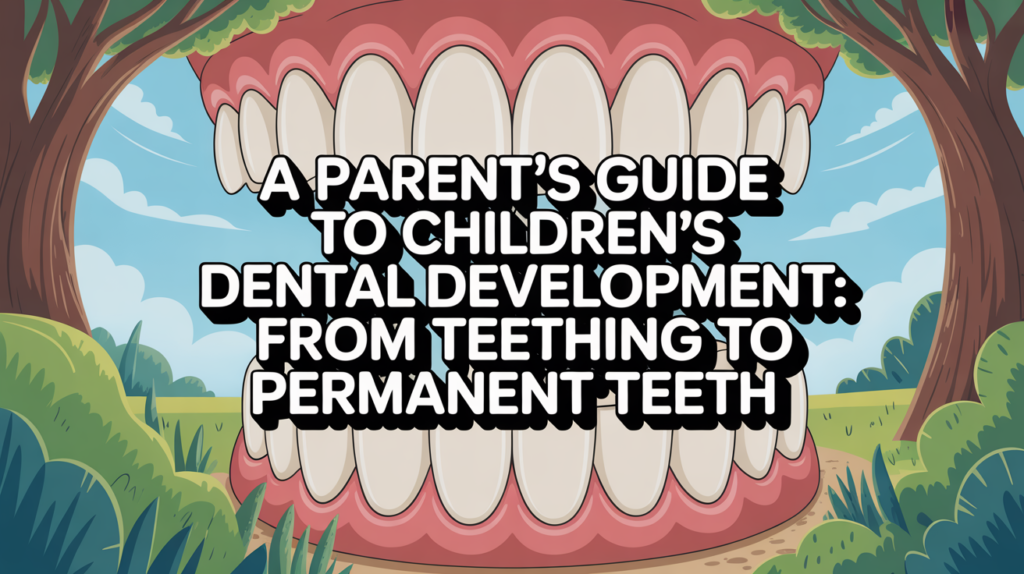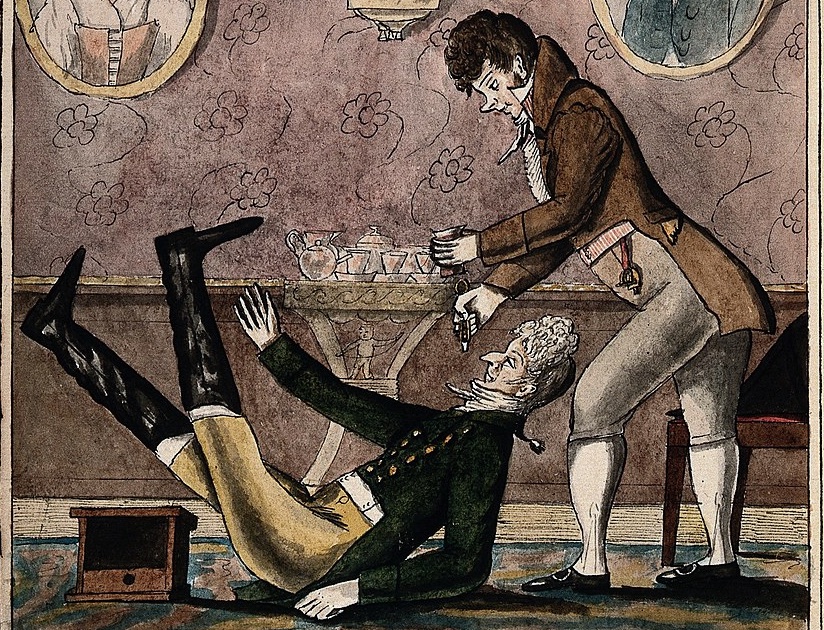A Parent’s Guide to Children’s Dental Development: From Teething to Permanent Teeth
Introduction to Children’s Dental Development
Children’s dental development is a fascinating journey that begins even before they are born and continues into their teenage years. From the first tooth peeking through the gums to the emergence of a full set of permanent teeth, each stage plays a vital role in their overall health and well-being. Understanding these stages helps parents ensure their child’s teeth grow strong and healthy. 😊
Parental involvement is crucial during every phase of dental development. By staying informed about what to expect and how to care for your child’s teeth, you can prevent problems and promote lifelong oral health. With the right knowledge, you’ll be better equipped to guide your child through teething, baby teeth, and beyond. Let’s dive into the details of this incredible process!
Prenatal and Early Childhood Tooth Formation
Believe it or not, your child’s teeth begin forming long before they’re born! Around the sixth week of pregnancy, tiny tooth buds start developing in the gums. These buds eventually become both baby teeth and permanent teeth. This early formation highlights the importance of prenatal care, as a mother’s health directly impacts her baby’s dental development. 🌱
Maintaining good oral health during pregnancy is essential. Conditions like gum disease can affect the baby’s teeth and overall health. By eating a balanced diet, staying hydrated, and visiting the dentist regularly, expectant mothers can give their babies the best start possible. After birth, proper care ensures those tiny tooth buds continue to develop correctly.
Teething Basics: Signs, Symptoms, and Relief
Teething is often one of the first major milestones in a child’s dental journey. It typically begins around six months of age, though some babies may start earlier or later. Common signs include drooling, chewing on objects, irritability, and swollen gums. While teething can be uncomfortable, it’s a natural process that marks the arrival of your child’s first teeth. 🦷
To soothe teething discomfort, try offering a clean, chilled teething ring or gently massaging your baby’s gums with a clean finger. Avoid using numbing gels unless recommended by a dentist, as some products may not be safe for infants. Remember, patience is key-this phase won’t last forever!
If your child seems unusually fussy or develops a fever during teething, it’s wise to consult a dentist or pediatrician. While mild symptoms are normal, persistent issues could indicate an underlying problem that needs attention. Trust your instincts as a parent-if something feels off, seek professional advice.
Primary (Baby) Teeth: Eruption Timeline and Function
Baby teeth usually start appearing between six months and one year of age, with the lower front teeth often coming in first. By the time your child is three years old, they’ll likely have a full set of 20 primary teeth. These teeth follow a predictable eruption pattern, which helps parents track their child’s progress. 📅
“Around the sixth week of pregnancy, the formation of tooth buds begins. These buds are the foundation for the primary (baby) teeth and later, the permanent teeth.” -Lancaster Pediatric Dentistry
Though they’re temporary, baby teeth play critical roles in your child’s development. They aid in chewing, speaking clearly, and holding space for permanent teeth. Losing baby teeth too early due to decay or injury can lead to future alignment problems. That’s why caring for these little teeth is so important!
Stages of Shedding Baby Teeth and Transition to Permanent Teeth
Between ages five and seven, children enter the exciting phase of shedding their baby teeth. This process happens gradually, with the roots of baby teeth dissolving to make room for incoming permanent teeth. Typically, the front teeth fall out first, followed by molars and canines. 🍂
“In the primary dentition stage, caregivers may observe various signs, such as increased drooling or chewing on objects, indicating that a child is experiencing teething discomfort.” -Children’s Dentistry of Rome
This period, known as mixed dentition, means your child will have a mix of baby and permanent teeth. It’s normal for there to be gaps or slight crowding as the mouth adjusts. Parents should monitor this transition closely and address any concerns with a dentist to ensure proper alignment.
To ease emotional stress, celebrate the loss of baby teeth as a milestone. Creating fun traditions, like leaving a note from the “Tooth Fairy,” can make the experience memorable. Practically, remind your child to brush gently around loose teeth and avoid wiggling them too much to prevent unnecessary pain.
“The eruption of primary teeth typically begins around six months of age, though this timeline can vary. The first teeth to emerge are usually the lower central incisors, followed by the upper central incisors.” -Lancaster Pediatric Dentistry
Permanent Teeth: Eruption Timeline and Types
Permanent teeth usually begin erupting around age six, starting with the first molars and central incisors. By the time a child reaches their mid-teens, they’ll have up to 32 permanent teeth, including wisdom teeth. Each type of tooth serves a unique purpose, from cutting food to grinding it down for digestion. 🧠
In addition to molars and incisors, children will also develop canines and premolars. These teeth work together to create a functional bite. Encouraging good habits, like regular brushing and avoiding sugary snacks, ensures these teeth stay strong and healthy for life.
“The lower incisor teeth are the first to erupt followed by the upper incisors and then the first deciduous molars. The average child has their 20 deciduous teeth by the age of 3 years.” -Better Health Victoria
Common Dental Issues During Childhood Development
Cavities, dental crowding, and delayed eruption are among the most common dental issues children face. Cavities occur when bacteria break down sugars in food, producing acids that damage enamel. Crowding happens when there isn’t enough space for all the teeth, while delayed eruption might signal an underlying issue. ⚠️
Parents should watch for warning signs such as discoloration, sensitivity, or difficulty chewing. Early intervention can prevent minor problems from becoming major ones. For example, orthodontic treatment may be needed if crowding becomes severe.
“Primary teeth play a crucial role in chewing, speaking, and guiding the eruption of permanent teeth.” -Lancaster Pediatric Dentistry
Preventative measures, such as fluoride treatments and sealants, can significantly reduce the risk of cavities. Regular check-ups allow dentists to catch issues early and provide tailored solutions. Keeping an open line of communication with your child’s dentist is key to maintaining their oral health.
Dental Hygiene and Preventative Care for Children
Good dental hygiene starts from day one-even before your baby’s first tooth appears. Use a soft cloth to clean their gums after feedings, then switch to a baby toothbrush once teeth emerge. As your child grows, teach them how to brush twice daily and floss once their teeth touch. 🪥
“Around age six, the process of shedding primary teeth and the eruption of permanent teeth begins. This stage is known as the mixed dentition stage, where children have a combination of primary and permanent teeth.” -Lancaster Pediatric Dentistry
Choosing the right dental products matters too. Look for fluoride toothpaste designed for kids and ensure they use only a pea-sized amount. Electric toothbrushes can make brushing more engaging for older children. Remember, consistency is key to preventing cavities and promoting healthy smiles!
Role of Nutrition in Dental Development
Nutrition plays a significant role in dental health. Calcium, phosphorus, and vitamin D are essential for building strong teeth and bones. Foods rich in these nutrients, like dairy products, leafy greens, and fortified cereals, should be included in your child’s diet. 🥛
“Generally, the order and rough timeline for each type of permanent tooth is: First molars – between 6 and 7 years. Central incisors – between 6 and 8 years.” -Better Health Victoria
As your child transitions through teething, shedding, and permanent tooth stages, adjust their meals to support their changing needs. Limit sugary snacks and drinks, as they contribute to decay. Instead, offer crunchy fruits and vegetables, which naturally clean teeth while providing vital nutrients.
Pediatric Dentistry: When to Visit and What to Expect
The American Academy of Pediatric Dentistry recommends scheduling your child’s first dental visit by their first birthday. Subsequent visits should occur every six months to monitor growth and address concerns. These appointments help establish a positive relationship between your child and their dentist. 👩⚕️
“The process of permanent teeth development usually starts around the age of 6 and can continue until a child is in their early teens.” -Parkway Pediatric Dentistry
During check-ups, dentists examine your child’s teeth, clean them professionally, and apply preventive treatments like fluoride varnish. They also educate parents on proper care techniques. Think of these visits as opportunities to ask questions and gain valuable insights into your child’s oral health.
Pediatric dentists specialize in making young patients feel comfortable and confident. Their expertise ensures that potential issues are caught early and treated effectively. Building trust with a reliable dentist sets the foundation for a lifetime of healthy smiles.
“Regular visits to a pediatric dentist are vital during this time, as professional guidance can help monitor dental development and address any concerns that arise.” -Children’s Dentistry of Rome
Tips for Promoting Positive Attitudes Toward Dental Care
Making dental hygiene fun encourages children to take ownership of their routines. Let them pick out a colorful toothbrush or flavored toothpaste, and turn brushing into a game with songs or timers. Positive reinforcement, like praise or stickers, reinforces good behavior. 😄
Reducing dental anxiety starts at home. Talk about dental visits in a positive light and avoid scary words like “pain” or “drill.” Role-playing dentist visits with toys can prepare them for real-life experiences. Instilling these habits early fosters a lifetime of proactive oral care.
Orthodontic Considerations: Early Signs and Evaluation
Early signs of orthodontic needs include crowded teeth, overbites, underbites, or difficulty chewing. If you notice any of these issues, consult an orthodontist for an evaluation. Early intervention can simplify treatment and improve outcomes. 🦷
Most orthodontists recommend an initial evaluation around age seven, as this is when permanent teeth start emerging. Even if no immediate treatment is needed, monitoring allows for timely interventions. Partnering with an orthodontist ensures your child’s smile develops beautifully.
FAQs on Children’s Dental Development
When should my child start teething? Most babies begin teething between four and seven months, but some may start earlier or later. Every child is different, so don’t worry if yours doesn’t follow the average timeline.
How many baby teeth does my child have, and when will they start falling out? Children typically have 20 baby teeth, which usually start falling out around age five or six. The process continues until about age 12.
Is it normal for permanent teeth to look bigger or yellower? Yes, permanent teeth are naturally larger and slightly darker than baby teeth. This difference is completely normal and part of growing up!
What should I do if my child’s baby teeth aren’t falling out on schedule? If your child’s baby teeth seem delayed in falling out, consult a dentist. They can determine whether there’s an underlying issue requiring attention.
How often should my child visit the dentist? Children should visit the dentist every six months for routine check-ups and cleanings. Regular visits help maintain optimal oral health and catch problems early.
Conclusion
From the excitement of teething to the milestone of losing baby teeth and welcoming permanent ones, children’s dental development is a remarkable journey. Each stage requires attention and care to ensure a bright, healthy smile. By understanding the process, you empower yourself to support your child’s oral health effectively. 💡
Empower yourself with the knowledge provided in “A Parent’s Guide to Children’s Dental Development: From Teething to Permanent Teeth” to support your child’s lifelong oral health. Establish consistent dental care routines, prioritize regular check-ups, and communicate openly with dental professionals. Together, we can build a generation of confident, smiling faces! ✨



